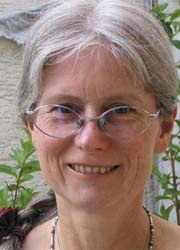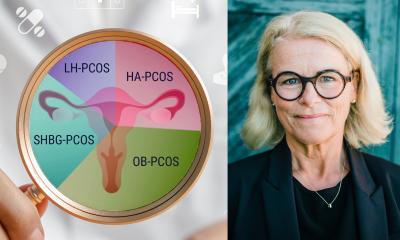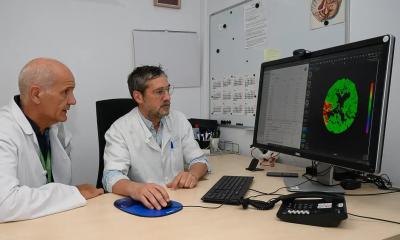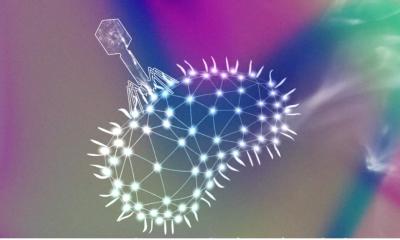Chinese traditional medicine - a complement, not an alternative
The interest in using traditional Chinese medicine (TCM) alongside conventional Western medical care has steadily increased among European physicians; it is no longer unusual, for example, for acupuncture to be suggested by a doctor to help fight tobacco addiction, or to ease a persistent musculoskeletal problem.

Dr Ingrid Kraus, a cardiologist who also runs a private clinic to exclusively provide patients with TCM and acupuncture, spoke with Christian Pruszinsky, European Hospital Correspondent in Austria, about the benefits of marrying these two medical approaches.
Christian Pruszinsky: Dr Kraus, you are a traveller between two worlds.
Ingrid Kraus: I don’t travel between the worlds, I’m fortunate to be able travel within two worlds. To be more precise: I can make use of the results of two very different schools of thought, which allows me to recognize the best possible approach for an individual patient in his or her specific situation.
In general, there is no ‘either/or’. That’s why, today, we don’t talk about TCM as an alternative, but as a complementary medical approach. That was an important step forward. Conventional - that is Western medicine – is also used in China. Obviously, a heart patient in a Chinese hospital has access to beta-blockers, ACE blockers, stents, by-passes, pacemakers or whatever is considered the European standard. Cancer tumours are also treated with chemotherapy, surgery or radiotherapy, just like here.
In addition the patient also receives herbal medicine, based on thousands of years of ancient knowledge, to mitigate side effects, to regulate blood pressure or reduce complications. Complementing herbal therapies are intended to strengthen the patient so he reacts better to chemotherapy, to improve his appetite, digestion, overall physical state. Because the better the overall state the better the patient will react to conventional therapies.
Does this mean there are no cancer therapies based exclusively on TCM? The media often report on such ‘magical cures’.
Obviously there are hospitals in China where cancer therapies are based exclusively on TCM, because the patient chooses that approach, and also due to the structure of that huge country, in which therapy options are not unified but diverse.
Would TCM departments in European hospitals create synergies?
In my experience Western conventional medicine and TCM would complement one another very well. But we shouldn’t forget that they are two completely different systems and even the diagnostic approach to a disease is based on different criteria. Let’s look at gastritis: Western cause-oriented diagnostics focuses on criteria such as helicobacter pylori positive/negative, ulcus present/not present, etc. After diagnosis comes a medication-based therapy. In Chinese diagnostics helicobacter pylori is completely irrelevant. The Chinese physician looks for symptoms, for example, the liver attacks the stomach, or he finds a lack of Yin. Each identified symptom requires very specific herbal formulas. So, to say one approach is more comprehensive than the other doesn’t make sense. Both systems are valuable in their own right.
Since TCM does not require expensive equipment, could a dedicated TCM diagnostic department give an economically competitive advantage to a hospital?
TCM does not come cheap, either. Chinese herbs are expensive and currently health insurers usually don’t reimburse those costs. However, wherever there’s a dedicated department - at the university hospital in Vienna, for example - the inter-system approach does offer benefits. More and more hospitals hire Chinese physicians trained in both conventional European medicine and TCM. This is important, because it can be interpreted as a signal to the insurers to include TCM therapies in their range of reimbursable services. Acupuncture, for example, is now an established therapy to ‘cure’ smokers, or to treat conditions of the musculoskeletal system, and some insurers are paying for this.
Obviously, in China acupuncture is used more than here. There, stroke patients can receive acupuncture treatment several times a week for two or three years. For Western hospitals, I again would favour a combination of both systems: acupuncture can be used to reduce spasticity, for example, which in turn would provide a better point of departure for physical therapy.
I support both systems, and both systems are successful in certain areas. Fortunately, there are signs of closer cooperation of both systems in terms of ‘climate’: mutual respect and recognition of therapy successes. In terms of statistics, these show a growing number of physicians complete both conventional as well as TCM training. This is linked to official recognition by professional associations, which, in turn, is a precondition for insurers to cover certain TCM therapies. In terms of future orientation: the work of the European TCM Society and the founding of the first private European TCM university, Li Shi Zen, in Vienna in 2003. In Germany there are a few TCM hospitals – the TCM-Klinken Am Steigerwald, in Kötztink and in Munich.
Can you personally use your rather rare ‘double knowledge’?
At the Zentrum für Ambulante Rehabilitation (see box) I can apply acupuncture, but Austria’s leading medical body has not approved Chinese herbal therapies, so they can’t be used in a rehab centre. When I believe certain patients would benefit from additional TCM therapies, but I can’t use them, that’s obviously sad. This is one area where I would like to see TCM officially recognised. On the other hand, in my private TCM practice I use all conventional diagnostic findings and medication instructions. That works pretty well. No doubt the patients would prefer the insurers to cover the costs of the often quite time-consuming diagnostic procedures and the herbal therapy.
Moreover, there is certainly some potential there, particularly regarding the patient’s constitution as seen from a TCM point of view, for example using tongue and pulse diagnoses. In addition, Chinese nutrition principles could be incorporated in preventive care.
* The Zentrum für Ambulante Rehabilitation (an in-patient rehabilitation centre run by the Pensionsversicherungsanstalt, Austria’s biggest health insurers), with its holistic approach to medicine, is currently unique in Europe. Forming a link between hospitals, in-patient rehabilitation centres and office-based physicians, it provides free out-patient care for up to a year following rehabilitation. The therapy team includes physicians, psychologists, physiotherapists, nurses and masseurs. Services are available to all the policyholders, and costs are reimbursed without deductions.
11.07.2007





